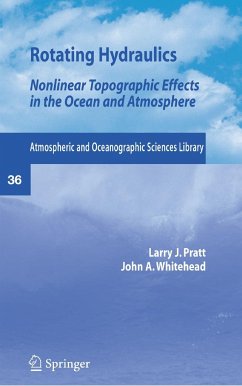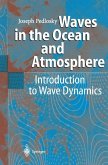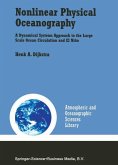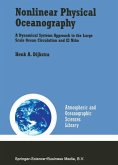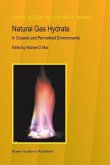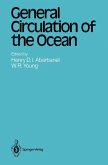The theory of rotating hydraulics is important in the study of certain types of swift oceanic and atmospheric flows. Applications include overflows in deep ocean passages such as the Faroe-Bank Channel, shallow exchange flows gaps such as the Strait of Gibraltar, and atmospheric flows such as in the California amarine layer and jet stream. Despite a 30-year history of development the subject is not covered in any of the standard graduate textbooks on geophysical fluid dynamics. This book thoroughly covers the development of the theory of rotating hydraulics, making frequent use of supporting laboratory models and observational data. The need to understand rotating hydraulic phenomena is growing as the general interest in climate and global circulation is continuously increasing. The book includes numerous exercises, making it a perfect textbook for graduate students in oceanography and meteorology. In addition, it identifies cutting-edge research and is of interest to more advanced researchers who seek specialized reference as well as engineering graduate studetns learning about hydraulics in general.
What is "rotating hydraulics" and why would anyone wish to read a book on the subject? Over the past three decades, the term has come to describe the physics of overflows and other choked flows of the ocean and atmosphere that are broad enough to be influenced by Earth's rotation. The currents and winds in question typically have high speeds, subcritical-to-supercritical transitions, shocks, and other objects familiar to open-channel or aeronautical engineers. Bores, int- sions, steepening waveforms and separation phenomena are considered part of the subject because they tend to arise within these flows. Mixing with neighboring fluid often occurs as the result of wave breaking or of instabilities associated with the high velocities. Interest in the field is often excited by the dramatic and strongly nonlinear character of the features in question and by the mixing and its downstream consequences. The subject is also important for the study of the Earth's climate because of the special opportunities for observation and long term monitoring made possible as a result of the choking effect. This book is concerned primarily with the theory of rotating hydraulics. However, the Introduction contains an overview of the observations that have motivated much of the theoretical development, and more detailed case studies appear later in the book. Though both the atmosphere and the ocean are covered, the latter is the source of the most numerous examples.
What is "rotating hydraulics" and why would anyone wish to read a book on the subject? Over the past three decades, the term has come to describe the physics of overflows and other choked flows of the ocean and atmosphere that are broad enough to be influenced by Earth's rotation. The currents and winds in question typically have high speeds, subcritical-to-supercritical transitions, shocks, and other objects familiar to open-channel or aeronautical engineers. Bores, int- sions, steepening waveforms and separation phenomena are considered part of the subject because they tend to arise within these flows. Mixing with neighboring fluid often occurs as the result of wave breaking or of instabilities associated with the high velocities. Interest in the field is often excited by the dramatic and strongly nonlinear character of the features in question and by the mixing and its downstream consequences. The subject is also important for the study of the Earth's climate because of the special opportunities for observation and long term monitoring made possible as a result of the choking effect. This book is concerned primarily with the theory of rotating hydraulics. However, the Introduction contains an overview of the observations that have motivated much of the theoretical development, and more detailed case studies appear later in the book. Though both the atmosphere and the ocean are covered, the latter is the source of the most numerous examples.

